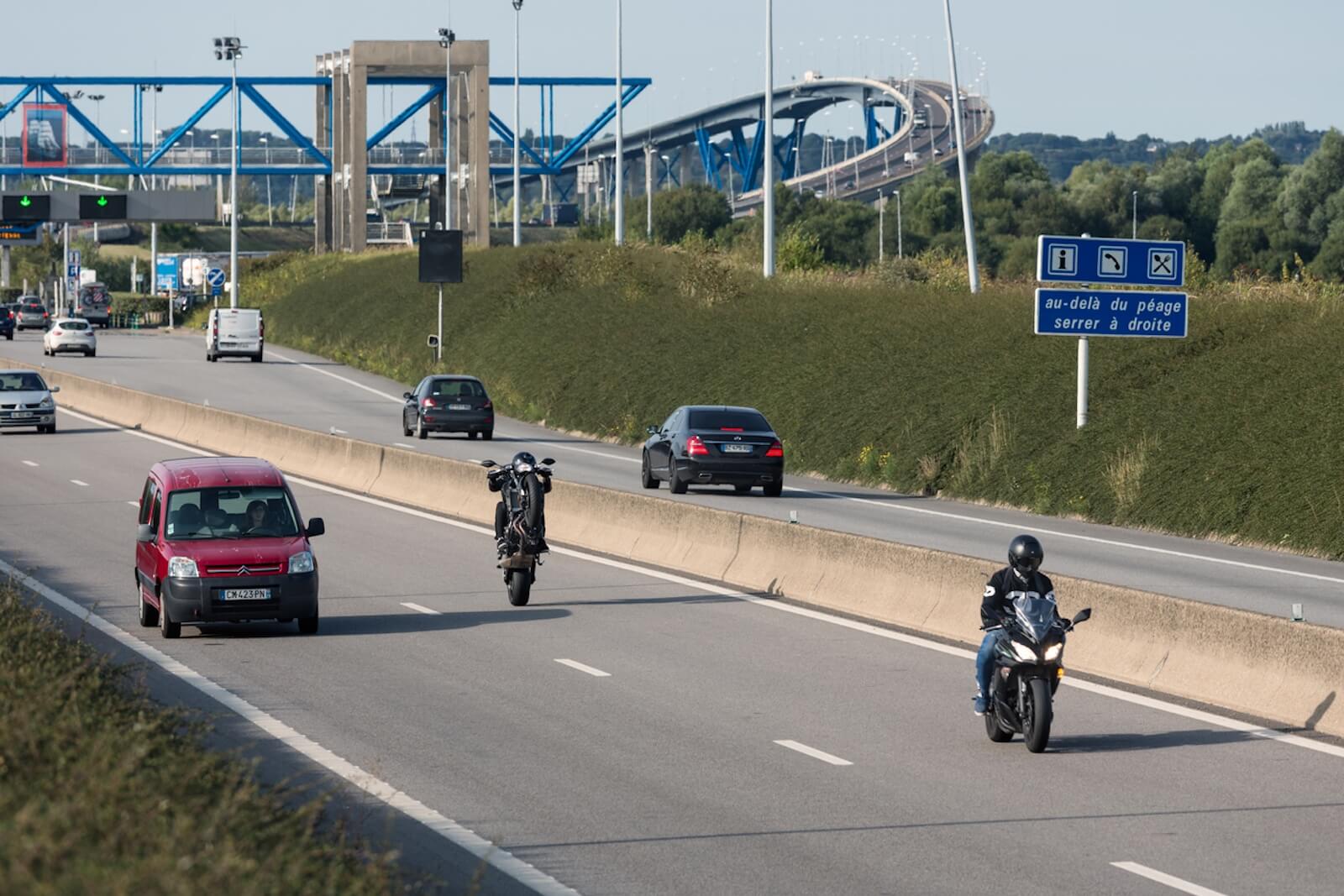Performing a wheelie in front of a cop might land you in hot water, even if there isn’t specific verbiage outlawing them.
Not much looks cooler than a seasoned motorcyclist popping their front tire up off the ground as they sail down the boulevard. Well, maybe an effortless stoppie. Either way, motorcycle wheelies are part of our two-wheeled culture. Still, are motorcycle wheelies illegal? Or is it more of a gray area?
A motorcycle wheelie could land you a misdemeanor charge and an impound fee
Motorcycle wheelies aren’t rare. Riders pop their wheels up aboard their taut, lean Suzuki sportbikes and Harley-Davidson cruisers every day. Understandably so, it’s one of the quintessential two-wheeled show-off maneuvers. Riders simply roll onto the throttle deliberately, pulling the front tire off the ground and continuing to ride as power heads to the rear wheel.
Tragically for fans of the daring maneuver, performing a wheelie could land you in hot water with the police. While there aren’t too many laws specifically listing motorcycle wheelies as illegal, doing so in view of a police officer will more than likely result in a traffic stop. Depending on your local law enforcement and their policies, you could receive a reckless driving ticket. However, if an LEO sees you popping a wheelie in a racing context, you could be looking at a Class A misdemeanor charge.

Wheelies aren’t the only single-wheel stunt that will earn you some negative attention from Johnny Law. A stoppie is a move where a rider stops hard using the front brake, forcing the rear tire off the ground. When performed well, it’s quite a sight. However, law enforcement might find a safety issue with the practice. As such, a rider might earn themselves a ticket or a court date for doing a stoppie on public roads.
I have a compatriot, who, after a few weeks of riding thought popping his front wheel off the ground would be a simple undertaking. Fortunate to say, after rebuilding his Yamaha and getting some medical attention, he’s back on two wheels. Emphasis on two. Wheelies and stoppies, then, are best left to closed courses and stunt riders.
That said, there are stunt courses that will teach riders how to perform a textbook wheelie. Better yet, the instructors will teach you in a controlled, closed environment.
